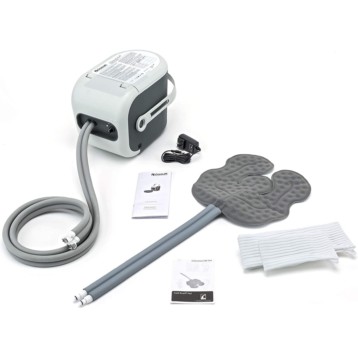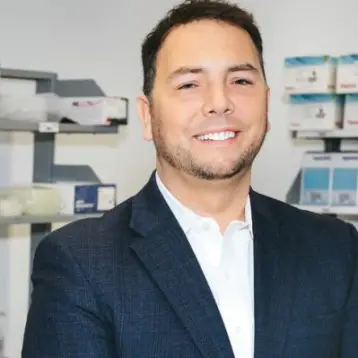
Photo by Cottonbro studio on Pexels
Private medical facilities are proving to be beneficial to the healthcare sector and the general public. They help extend medical services to more people, reducing the burden on public health centers. However, these facilities need thorough management effort for the performance to be great. As a manager, quickly identify the major challenges and look for the right strategies for better patient care. Here are seven simple yet effective tips to manage your private practice:
1. Prioritize Patient Communication
The way you share information between departments or with patients needs to be top-level. Ensure you have sound, open lines of communication where anyone can reach out and seek clarification or voice concerns effortlessly. This direct contact with patients and their families helps build trust while displaying an image of a patient-centric facility.
Remember to diversify your communication routes as you aim to have more face-to-face interactions. Consider creative and economical ways of achieving better customer engagement using social media outlets, virtual assistants, or emails. Be active in sharing information on your operations and any changes through your website.
2. Focus on Patient Experience
Aim to meet the patient’s expectations to always stand in a good position for success. When they arrive at your facility, you need to make them appreciate their decision to pick you. Make them feel heard and offer space to share their concerns. Pay attention to small details, from comfortable seating in the waiting room to soothing background music, to create a welcoming atmosphere that puts patients at ease.
Establish solid post-treatment programs to follow up on their recovery. Train your employees and encourage them to keep learning more about meeting patient’s needs. Organize seminars and meetings where you’ll call in experts and other industry leaders who will expose them to new tips for handling patients.
3. Cultivate A Better Working Environment
Whether looking to boost patient care or productivity, employees are the heartbeat of the company. Therefore, going the extra mile to create a welcoming environment that allows them to thrive is vital. Prioritizing nurse safety through the right strategies and tech solutions is essential. It removes distractions, prevents unwanted incidents, and boosts morale across the firm.
As well as safety, you must consider general employee wellness. Doctors, nurses, and other medical professionals are in a highly stressed setting. So, having good break room facilities to help them refresh and recharge will make a difference. You should also consider an investment into mental health first aid. When working with patients. Healthcare experts have to avoid showing weakness. So, having support in place for difficult moments should be supported by compassionate leadership. Team building days can be very effective too, not least because it helps colleagues develop stronger bonds.
4. Invest in Charge Capture Software
Leveraging tools is fundamental in taking your managerial work to the next level. Charge capture software is one good example and can help you streamline all the management and recording work of patient charges after rendering services. It also allows perfect automation of your service documentation, which translates to more timely and accurate billing.
Compared to the manual charge entry, capturing the charges electronically helps keep human omissions or errors low. If you have billing software and a HER (Electronic health record) system, you can do an integration with these tools. This saves you from the need to have duplicate data entries. A MediMobile Charge Capture Software will also offer real-time visibility of your activities. This makes it effortless for your administrators to monitor and track your revenue cycles. The best tools will help you have unified documentation and allow timely insurance updates.
5. Establish Clear Policies and Procedures
Give your facility a sense of common purpose and direction through having some policies. Before developing them, thoroughly consult the managerial team on how best to run the place. Be comprehensive, covering different areas from insurance claims to handling billing and scheduling appointments. Clear guidelines will ensure everyone understands what is expected of them and what actions to take in dealing with specific situations. It will also streamline your operations while reducing the chances of conflicts and misunderstandings among staff.
As your organization grows, have a plan where you assess the significance and relevance of the current policies and whether there is a need for some adjustments. Ensure all staff members are trained on these policies and procedures and can access updated documentation. Regularly review and revise your protocols to effectively adapt to changes in healthcare regulations, technology, and patient needs.
6. Stay Up to Date with Regulations and Compliance
As you strive to keep your operations top quality, ensure that everything aligns with the industry-specific requirements that apply to your practice. Whether it’s the billing and coding guidelines or the HIPAA (Health Insurance Portability and Accountability Act), ensure that you remain compliant and keep researching more about any changes. Work closely with healthcare compliance consultants whenever there are updates to the regulations to get insights on how it will impact your operations to be safe from legal battles, which can lead to penalties, fines, or revoking the facility license.
7. Prioritize Self Care
Managing a private medical center can be emotionally and physically engaging work, making it crucial to keep yourself refreshed. Have a perfect balance between your personal and work life to avoid burnout, which can lower your productivity. Make this part of your institutional culture, where you’ll establish policies to protect workers’ welfare. This can be done by having the right workloads in every position and adding personnel as your activity level increases.
Delegate tasks and avoid micromanagement to relieve some pressure off your shoulders, especially when you nurture a strong, competent team. Seek support from colleagues, mentors, or mental health professionals when needed. A healthy and balanced provider is better equipped to deliver quality care.
8. Seek Continuous Improvement
Keep looking for new opportunities for improvement in your operations. Cultivate a culture of innovation and creativity by encouraging your team to share ideas and concepts that can elevate the medical center’s performance. Remember to set up a feedback system to obtain valuable responses from the patients on their experience to identify areas that require improvements.
Endnote
Managing a successful medical practice calls for an all-around approach to keeping all operations running. When you implement the above crucial tips and strategies, it is easier to establish your private practice for long-term success and deliver top-notch patient care.










